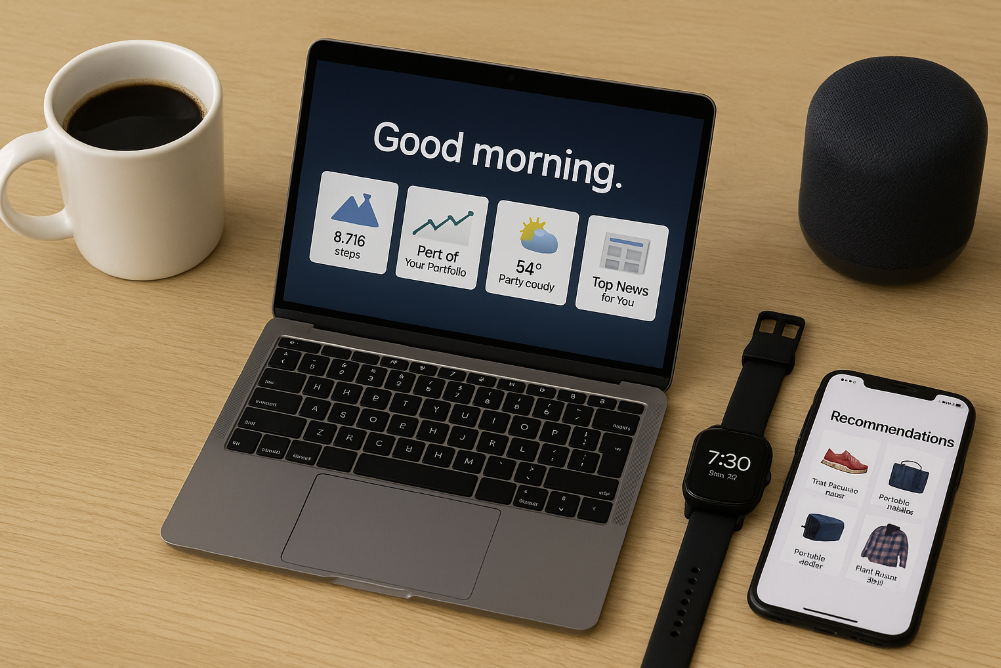- August 8, 2025
- FOXITBLOG
The current surge in artificial intelligence adoption is not a loud, crashing disruption. It’s a quiet, pervasive shift, altering how work gets done, who holds the most influence, and how value is created and captured. To those paying attention, it’s reminiscent of past technological revolutions. But this time, the rules and the stakes are different.
A Familiar Pattern with New Variables
When we compare today’s AI boom to the Industrial Revolution, the parallels are obvious: productivity spikes, certain jobs disappear, and new economic giants emerge seemingly overnight. But unlike the sudden mechanization of factories, today’s AI transformation isn’t eliminating humans in one clean sweep. Instead, it’s compressing the time it takes to perform complex tasks, subtly changing team dynamics.
Jedakiah Simonenko, an AI developer with a background in software development and economics, drew this connection directly: “This is technology replacing workers in large scale… people’s jobs get replaced by technology so quickly that productivity goes up, and you see big shifts in the economy and in the way people, as a society, view the shift as well.”
Yet, as Evan Reiss, VP of Marketing at Foxit, noted, the transition is far more incremental this time: “Right now we still need humans to define most of our processes and then audit it or QA it at some point… I haven’t seen it actually impact hiring or jobs.”

The Rise of the AI-Augmented Polymath
On the talent side, hiring isn’t yet showing mass displacement. Instead, there’s a growing appetite for “polymath” professionals, meaning naturally curious individuals who adapt quickly to new tools. Reiss sees these qualities as critical: “Individuals that are more curious or naturally curious… are usually the ones that are early adopters of technology and more inclined to use it in a way that benefits them and their role.”
AI’s current strengths are still narrow. It excels where workflows are well-defined and data-rich, but most processes still require human oversight, quality control, and contextual judgment. The moment we cross that threshold, where AI can operate effectively without human input, will be the true tipping point.
Data as the New Monopoly Lever
History suggests that every technological leap creates dominant players. In the Industrial Revolution, economies of scale concentrated power into a few mega-corporations. Today, the equivalent lever isn’t machinery, it’s data.
As Simonenko explained, companies with the richest datasets will have an advantage that compounds over time: “When you see that a company just has access to more data, then it’s going to become a natural monopoly again… absolutely they can [get bigger] if they just continue to play things right.”
Even as AI processing costs drop, lowering the barrier for startups and independent developers, the competitive landscape may still converge toward a handful of ultra-dominant providers. “There’s still only so much market space,” Simonenko cautioned. “Often one winner takes most.”

Personalization’s Bright and Dark Sides
For consumers, AI’s most visible power may be personalization. Algorithms can predict needs so accurately they sometimes appear psychic by doing things such as recommending products, destinations, or services before we consciously realize we want them.
Simonenko, who has designed recommender systems, explained that these systems don’t require invasive data to be effective: “They don’t need to know the person’s age… just from the interactions… the neural network learns things about you… without ever knowing anything about you other than those interactions.”
This is the hidden genius (and potential threat) of modern recommendation engines. For marketers, it’s gold. For regulators, it’s a nightmare because if algorithms can achieve this precision without collecting “sensitive” data, then regulating specific data points does little to reduce their predictive power.
The Regulation Gap
Regulation historically lags far behind technological innovation, and AI is no exception. Policymakers often lack a deep understanding of how AI systems work, making it difficult to design effective rules.
Simonenko warned that even developers don’t always understand their own models deeply enough to predict how they’ll behave: “Sometimes people who even develop the technology themselves don’t fully understand… it’s a black box.” This creates a dangerous blind spot: measures meant to safeguard privacy may be irrelevant if the most predictive signals come from seemingly harmless interaction patterns.
Geopolitics further complicates the picture. Different regions are adopting starkly different approaches, from Europe’s stringent GDPR compliance requirements (driving demand for local, offline AI models) to the United States’ more market-driven pace, to China’s state-aligned data strategies. As Reiss noted, the U.S. has already begun restricting certain bulk data transfers to foreign nations. These moves could shape not just the AI market, but the balance of technological power globally.
A Democratized Yet Uneven Future
Despite the risk of monopolies, AI is also lowering barriers to entry in remarkable ways. Tools that once required entire engineering teams can now be wielded by solo innovators. Reiss predicts a resurgence of what he calls the “garage innovator”: “Young developers… may get fired from their job, but they’re going to be the ones… making the next new app, launching it and putting it out into the world and monetizing it without much real effort.”
But the ultimate winners will still face the same old bottleneck: market saturation. Many will enter, few will dominate, and the deciding factors will be execution, timing, and (more importantly) data.
The AI boom is neither a utopia nor a dystopia. Instead, it’s a complex, evolving reality. We’re in a moment where individuals, teams, companies, and nations are all experimenting with how to wield this new capability. The winners in the next decade will be those who combine adaptability with strategic control of data, all while navigating the ethical and regulatory terrain with eyes wide open.
The “invisible shift” isn’t invisible to those watching closely. For professionals in every field, the real question isn’t whether AI will reshape your work, but how prepared you’ll be when it does.
Interested in learning more? Catch the full podcast with Evan Reiss, Jedakiah Simonenko, and host Charles Verhey here.
New podcast interviews every Friday.

